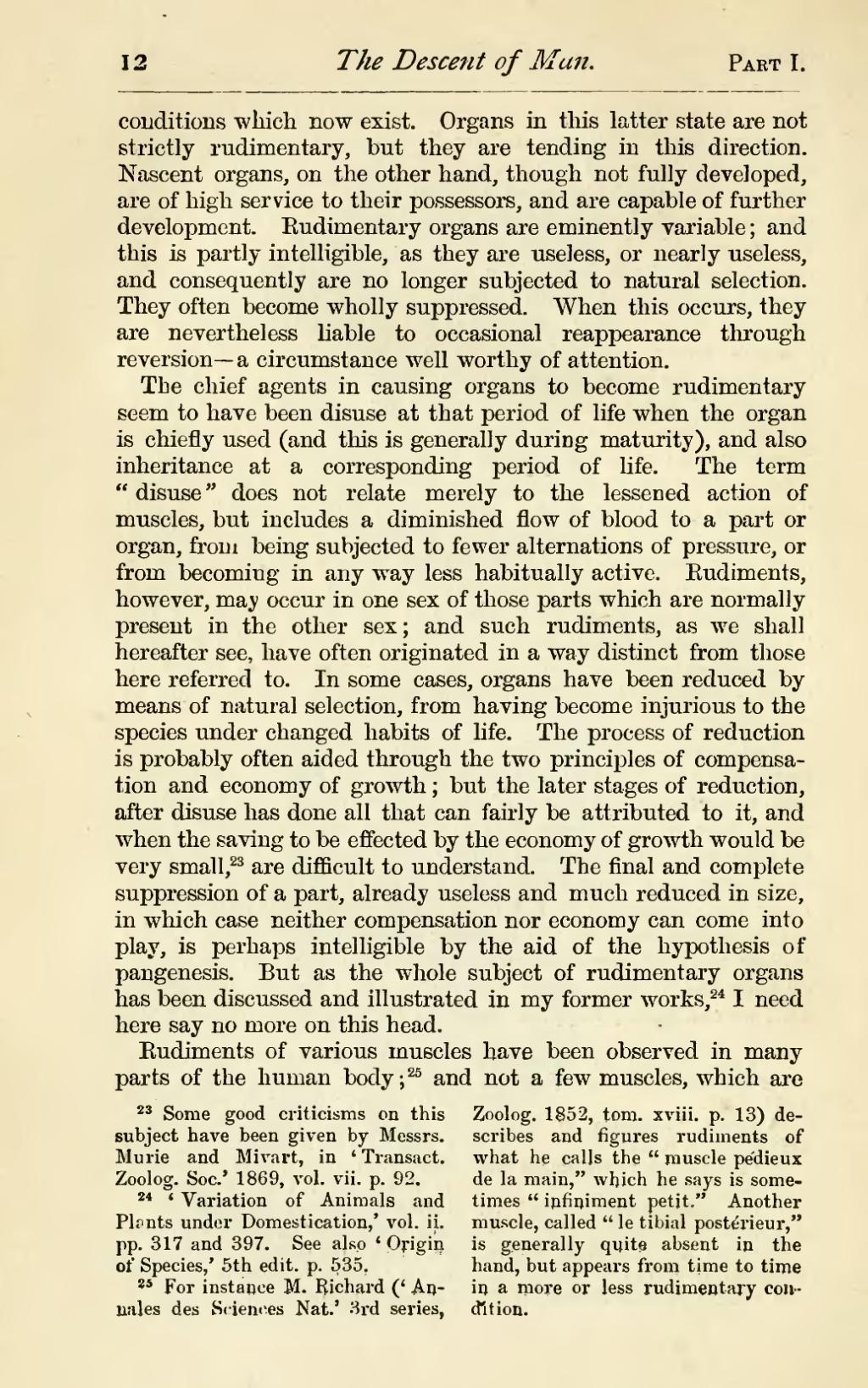conditions which now exist. Organs in this latter state are not strictly rudimentary, but they are tending in this direction. Nascent organs, on the other hand, though not fully developed, are of high service to their possessors, and are capable of further development. Rudimentary organs are eminently variable; and this is partly intelligible, as they are useless, or nearly useless, and consequently are no longer subjected to natural selection. They often become wholly suppressed. When this occurs, they are nevertheless liable to occasional reappearance through reversion—a circumstance well worthy of attention.
The chief agents in causing organs to become rudimentary seem to have been disuse at that period of life when the organ is chiefly used (and this is generally during maturity), and also inheritance at a corresponding period of life. The term "disuse" does not relate merely to the lessened action of muscles, but includes a diminished flow of blood to a part or organ, from being subjected to fewer alternations of pressure, or from becoming in any way less habitually active. Rudiments, however, may occur in one sex of those parts which are normally present in the other sex; and such rudiments, as we shall hereafter see, have often originated in a way distinct from those here referred to. In some cases, organs have been reduced by means of natural selection, from having become injurious to the species under changed habits of life. The process of reduction is probably often aided through the two principles of compensation and economy of growth; but the later stages of reduction, after disuse has done all that can fairly be attributed to it, and when the saving to be effected by the economy of growth would be very small,[1] are difficult to understand. The final and complete suppression of a part, already useless and much reduced in size, in which case neither compensation or economy can come into play, is perhaps intelligible by the aid of the hypothesis of pangenesis. But as the whole subject of rudimentary organs has been discussed and illustrated in my former works,[2] I need here say no more on this head.
Rudiments of various muscles have been observed in many parts of the human body;[3] and not a few muscles, which are
- ↑ Some good criticisms on this subject have been given by Messrs. Murie and Mivart, in 'Transact. Zoolog. Soc.' 1869, vol. vii. p. 92.
- ↑ 'Variation of Animals and Plants under Domestication,' vol. ii. pp. 317 and 397. See also 'Origin of Species,' 5th edit. p. 535.
- ↑ For instance, M. Richard ('Annales des Sciences Nat.' 3rd series, Zoolog. 1852, tom. xviii. p. 13) describes and figures rudiments of what he calls the "muscle pédieux de la main," which he says is sometimes "infiniment petit." Another muscle, called "le tibial postérieur," is generally quite absent in the hand, but appears from time to time in a more or less rudimentary condition.
